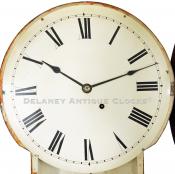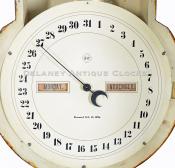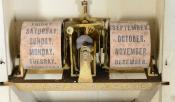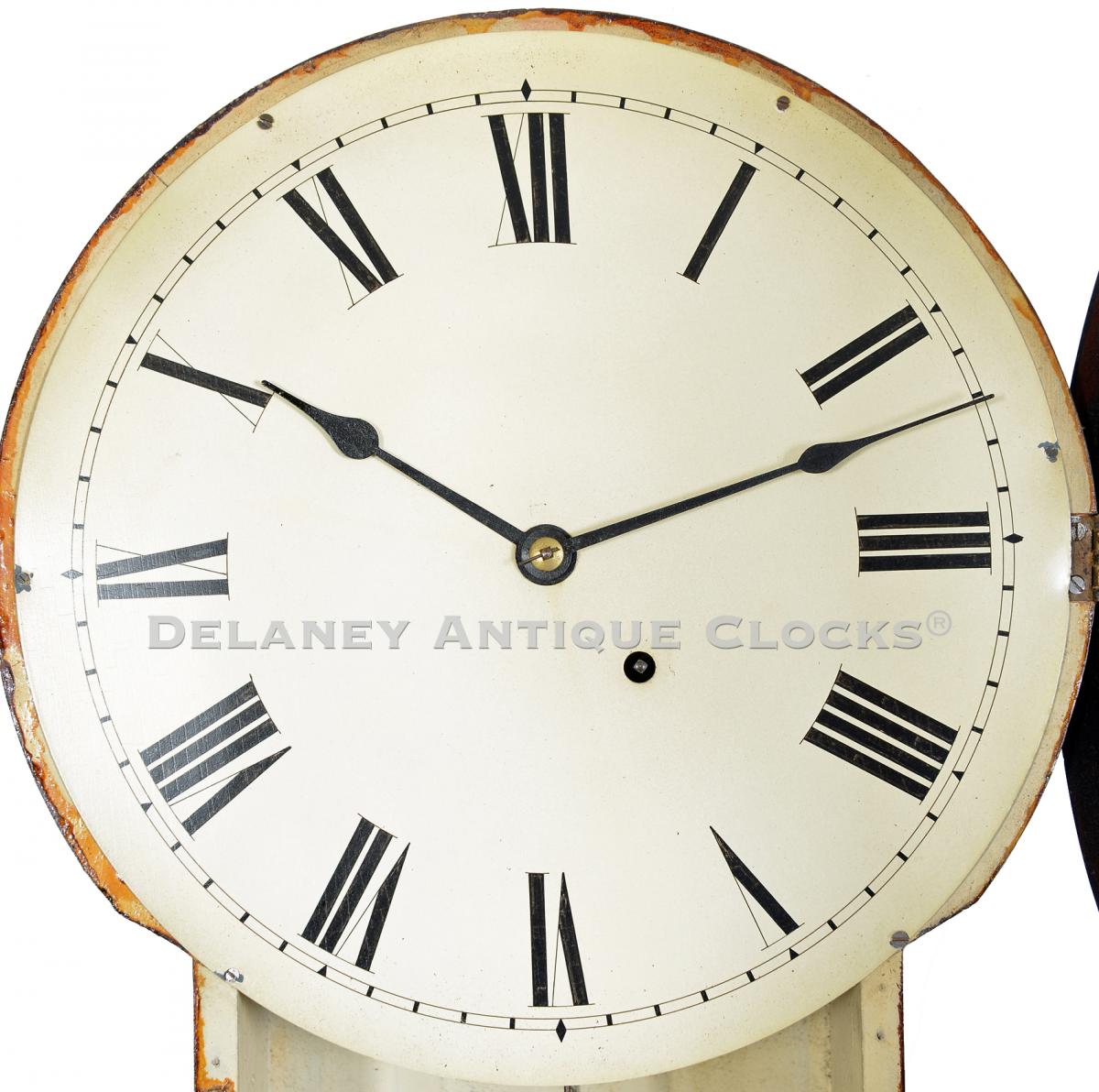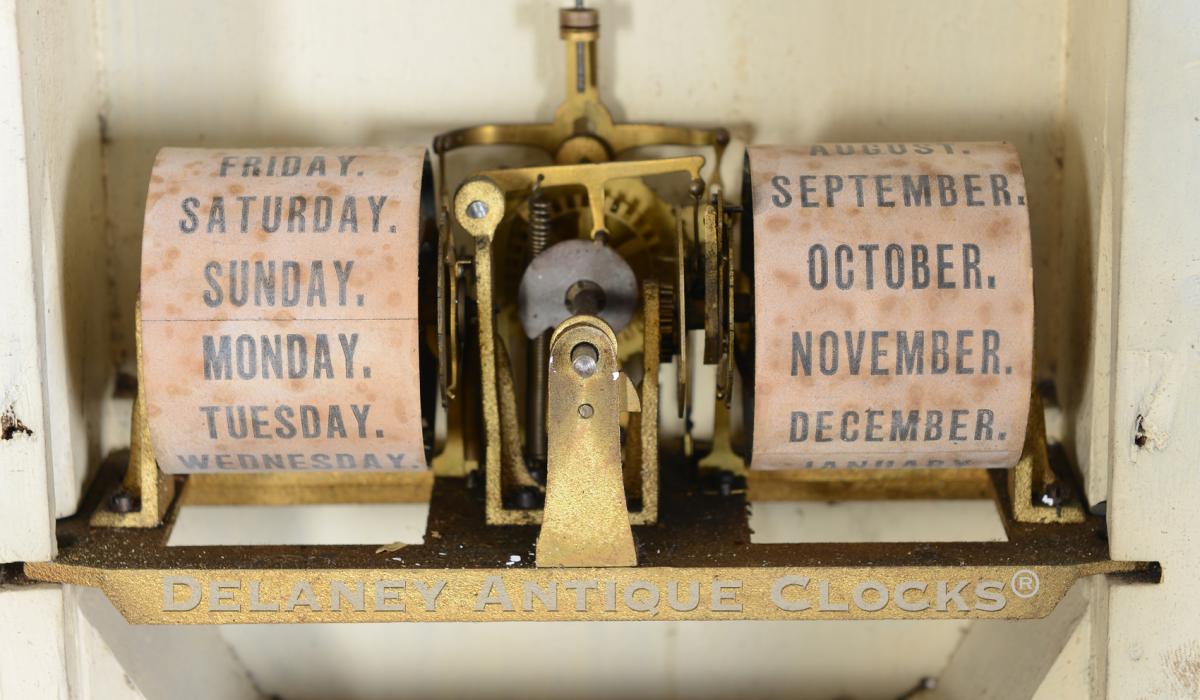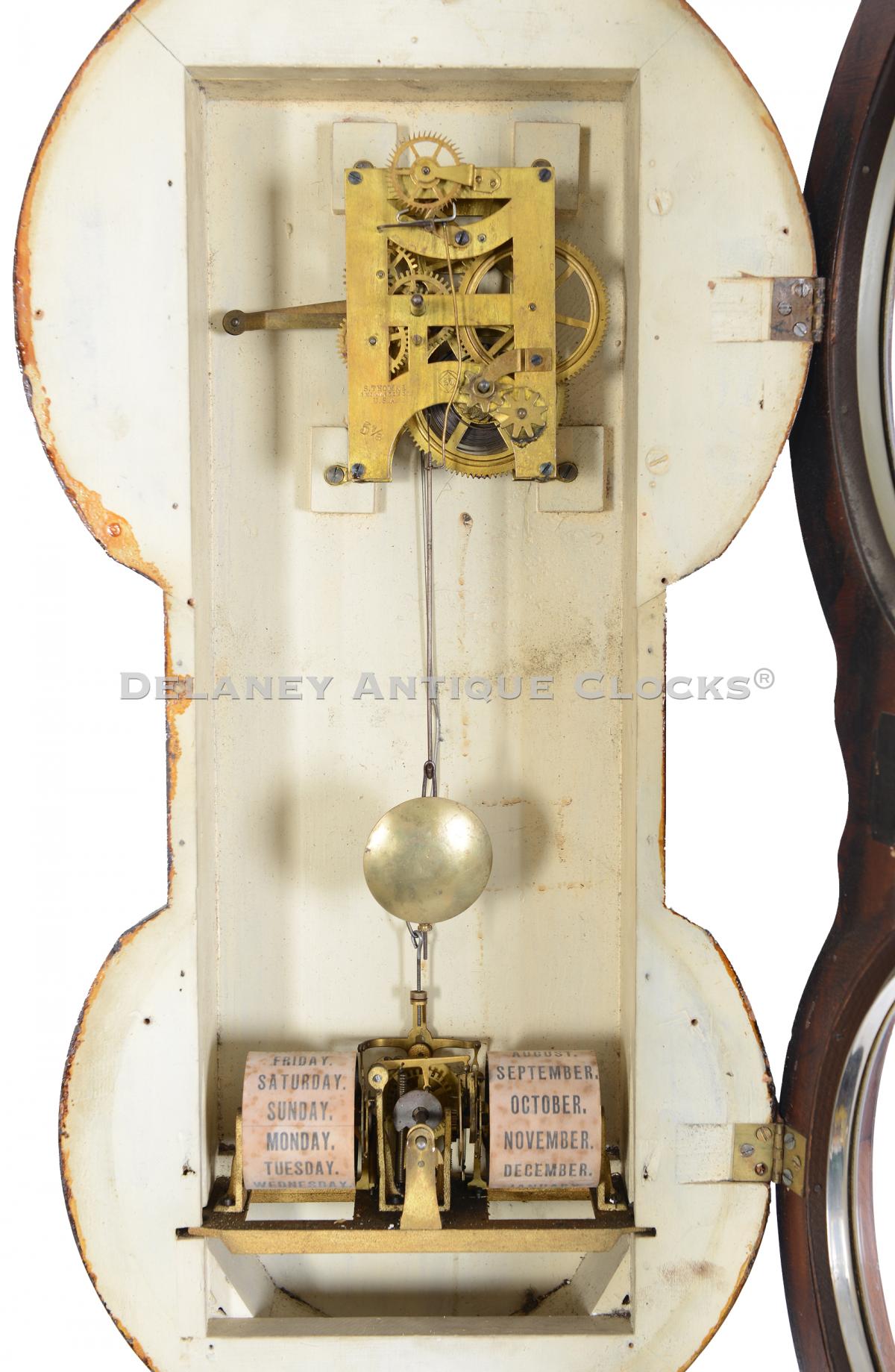Seth Thomas Office Calendar No. 6. A double dial wall clock. 223248.
This Seth Thomas Office Calendar No. 6 wall clock in a rosewood case. This fine example retains an older finish. Seth Thomas Clocks are notorious for needing their clock dials repainted. Remarkably, this clock retains its original painted zinc dials, which are nearly perfect and untouched. The upper time dial measures 12 inches in diameter and displays the maker's trademark, "ST / USA." The lower calendar dial measures 10 inches in diameter. It displays the calendar day around the perimeter and the patent date for the calendar mechanism. This reads, "Patented Feb. 15, 1876." The day of the week and the month are displayed through a rectangular window. These roles are covered in paper and are original to the clock. They are in excellent condition. The eight-day spring wound movement is brass construction with steel pinions. The front plate bears the clockmaker's die-stamp. The calendar mechanism is perpetual. This means that the calendar display will adjust automatically for the variations in the lengths of months and also for leap year.
This clock is 32 inches long, 15.5 inches wide, and 5.5 inches deep. It was made circa 1885.
Inventory number 223248.
Seth Thomas was born in Wolcott, Connecticut, in 1785. He was apprenticed as a carpenter and joiner and worked building houses and barns. He started in the clock business in 1807, working for clockmaker Eli Terry. Thomas formed a clock-making partnership in Plymouth, Connecticut, with Eli Terry and Silas Hoadley as Terry, Thomas & Hoadley. In 1810, he bought Terry's clock business, making tall clocks with wooden movements. Seth chose to sell his shares in the partnership in 1812, moving in 1813 to Plymouth Hollow, Connecticut, where he set up a factory to make metal-movement clocks. In 1817, he added shelf and mantel clocks. By the mid-1840s, He successfully transitioned to brass movements and expanded his operations by building a brass rolling mill and a cotton factory. In 1853, He incorporated the business but continued to be the majority shareholder. This clock business expanded until it became one of the "BIG Seven" in Connecticut. Their product line had offerings that competed at every price point, from kitchen clocks to precision regulators. Seth Thomas died in 1859. The community of Plymouth Hollow so revered him that they changed the name on July 6, 1875, to Thomaston in his honor. After his death, his son, Aaron, took over the company's leadership. Aaron is credited with increasing the business by adding a number of new case styles and improving production methods. The company went out of business in the 1980s.




